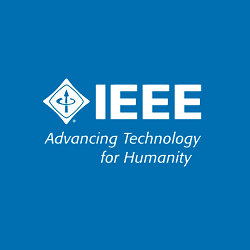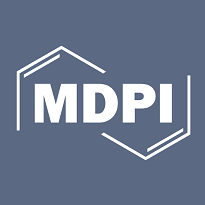دانلود ترجمه مقاله ارزیابی تلفیق منطق فازی با مدل دانش آموزی محیط یادگیری – مجله الزویر
| عنوان فارسی مقاله: | ارزیابی تلفیق منطق فازی با مدل دانش آموزی محیط یادگیری بر مبنای وب |
| عنوان انگلیسی مقاله: | Evaluating the integration of fuzzy logic into the student model of a web-based learning environment |
| دانلود مقاله انگلیسی: | برای دانلود رایگان مقاله انگلیسی با فرمت pdf اینجا کلیک نمائید |
| سال انتشار | ۲۰۱۲ |
| تعداد صفحات مقاله انگلیسی | ۸ صفحه |
| تعداد صفحات ترجمه مقاله | ۱۸ صفحه |
| مجله | سیستم های خبره با نرم افزار |
| دانشگاه | پیراوس کشور یونان |
| کلمات کلیدی | مدل دانش آموزی – منطق فازی – سیستم های انطباقی – ارزیابی |
| نشریه الزویر | Elsevier |
فهرست مطالب:
چکیده
۱ مقدمه
۲ کاروابسته
۳ مدل دانش آموز
۴ تلفیق منطق فازی با مدل دانش آموزی
۵ ارزیابی
۱ ۵ روش
۲ ۵ تخت تست
۳ ۵ نتایج و بحث
۶ نتایج
بخشی از ترجمه:
در این مقاله، اثربخشی و صحت مدل دانش آموزی محیط آموزشی بر مبنای وب برای تدریس برنامه نویسی کامپیوتری ارزیابی می گردد. مدل دانش آموزی ، دانش فراگیر را از طریق یک مدل جایگذاشت مطرح کرده و از تکنیک منطق فازی برای تعریف و به روزدرآوری سطح دانش دانش آموزی از هر مفهوم حوزه ، هربار که با سیستم یادگیری اینترنتی تعامل برقرار می کند، استفاده می کند. ارزیابی مدل دانش آموزی یک سیستم آموزش هوشمند (ITS) ، یکی از ابعادی است که راجع به آن راهبردهای روشن و مشخصی در ادبیات مطرح نشده است. بنابراین، از روشهای ارزیابی معروفی برای ارزیابی مدل دانش آموزی فازی جهت طراحی یک روش ارزیابی درست و صحیح استفاده می گردد. مدلهای ارزیابی عبارتنداز: مدل و روش ارزیابی لایه ای. دانش آموزان برنامه پس از فارغ التحصیلی در رشته انفورماتیک در دانشگاه از این سیستم برای یادگیری نحوه برنامه نویسی در زبان برنامه نویسی C استفاده کردند. نتایج ارزیابی بسیار تشویق کننده و امیدوار کننده بود.
واژگان کلیدی: مدل دانش آموزی- منطق فازی- سیستم های انطباقی – ارزیابی
۱٫ مقدمه
در دهه های گذشته، علاقه به محیط ها و ابزارهای یادگیری بر مبنای وب ، شاهد رشد سریعی بوده است. اما، محیط های یادگیری برمبنای وب با زمینه ها و نیازهای ناهمگون فراگیران سرو کار دارند. اختلافات فردی دانش آموز نقش اصلی را در یادگیری برمبنای وب ایفا کرده و راه رسیدگی به آن استفاده از سیستم های آموزش هوشمند (ITS) می باشد که به نسل پیشرفته ای از سیستم های آموزشی کامپیوتری تعلق دارد که از طریق سازش با محتوا و معرفی آن به نیازها و اولویت های دانش آموز، تجربه یادگیری شخصی بالایی در اختیار دانش آموزان قرار می دهند. بنابراین نیاز به توسعه سیستم آموزشی بر مبنای وب که قادر به سازگاری دینامیکی با هر دانش آموز باشد، پدید آمده است. یادگیری اینترنتی انطباقی ابزاری مناسب برای تدریس جوامع دانش آموزی مختلف در آموزش سطح بالاتر می باشد. ایجاد یک سیستم یادگیری انطباقی که نیازمندیهای دانش آموزان را تامین کند، می تواند چالش برانگیز باشد، زیرا دانش آموزان نه تنها با نیازهای مختلف، بلکه با ویژگیهای یادگیری متفاوت یادمی گیرند. بنابراین، برای ایجاد یک برنامه آموزشی بر مبنای وب انطباقی، لازم است بر مدل دانش آموزی تاکید شود که جزء و مولفه اصلی در هر سیستم آموزشی انطباقی یاهوشمند محسوب می شود که بازتابی از بسیاری مشخصه ها و ویژگیهای دانش آموز مثل صفات فردی و دانش می باشد. مدل سازی دانش آموزی به فرایند گردآوری اطلاعات مربوطه به منظور استنباط حالت ادراکی فعلی دانش آموز و دسترس پذیری و مفید بودن آن برای ITS برای انطباق و سازگاری اتلاق می گردد. کاربردی ترین روش در حوزه مدلسازی کاربر، مدل جایگذاشت می باشد. ایده و هدف اصلی این روش مدلسازی آن است که مدل فراگیر، زیرمجموعه ای از مدل حوزه می باشد. اما در بسیاری از موارد، مدلسازی دانش آموزی، با عدم قطعیت سرو کار داشته و یکی از شیوه های ممکن برای مواجه شدن با آن منطق فازی می باشد. تلفیق و ادغام منطق فازی با مدل دانش آموزی یک ITS، ایده خوبی است، زیرا روشهای برمبنای منطق فازی، با فرایندهای تصمیم گیری انسانی بیشتر همخوانی دارند. اگرچه سازش حاصل شده از طریق تکنیک های مدلسازی کاربر اغلب ، تعامل بین کاربر- سیستم را ارتقاء می دهد، اما بیشتر اوقات، استفاده از این نوع تکنیک ها، باعث پیچیده ترشدن سیستم شده و در نتیجه باید این مسئله مورد ارزیابی قرار بگیرد که آیا انطباق پذیری واقعاً سیستم را ارتقاء می دهد و اینکه آیا کاربر واقعاً ورژن انطباقی آن را ترجیح می دهد یا خیر. ارزیابی سیستم های انطباقی ، به خاطر پیچیدگی این قبیل سیستم ها، کاری سخت و دشوار می باشد، بسیاری از مطالعات انجام شده به این موضوع اشاره کرده اند. بدین طریق، ارزیاب ها باید اطمینان حاصل کنند که ازروشهای ارزیابی درست و متریک های اندازه گیری استفاده شده است. در جامعه سیستم های آموزش هوشمند، شیوه معمول برای ارزیابی، اجرای آزمایش با مجموعه ای خاص از کاربران می باشد. اما، چارچوب اندازه گیری موافقت شده استانداردی برای ارزیابی ارزش و اثربخشی انطباق حاصل از سیستم های انطباقی وجود ندارد. بنابراین، ارزیابی و اطمینان از این مسئله که فرایند ارزیابی از روشهای درست استفاده می کند، بسیار مهم می باشد، زیرا یک روش نادرست می تواند منجر به نتایج غلطی گردد. با این اوصاف، در این مقاله، روند تلفیق منطق فازی در مدل دانش آموزی محیط آموزشی بر مبنای وب برای تدریس زبان برنامه نویسی C توصیف و ارزیابی می گردد. برای این کار از یک مدل دانش آموزی جایگذاشت برای مطرح نمودن سطح و نیازهای دانش هر فرد استفاده می شود. به روزدرآوری مدل دانش آموزی بر اساس مکانیسم قواعد در مجموعه های فازی انجام می شود که ازآن ها برای توصیف سطح دانش دانش آموز از مفاهیم حوزه دانش استفاده شده است، راجع به این مسئله در کار قبل توضیح داده شده است. بنابراین، مدلسازی دانش آموزی و تصمیم گیری انطباقی از منطق فازی استفاده می کنند. برای ارزیابی اثربخشی و کارایی مدل دانش آموزی و تخمین موفقیت تطابق، که از طریق مدل دانش آموزی سیستم حاصل گردیده است، از ترکیبی از دو مدل معروف و استفاده شده برای ارزیابی : و روش ارزیابی لایه ای استفاده گردید. مدل ابزاری ایده آل برای اندازه گیری اثربخشی برنامه های آموزشی محسوب شده و روش ارزیابی لایه ای شیوه ای برای ارزیابی موفقیت تطابق می باشد که توسط سیستم یادگیری انطباقی عرضه شده است. رئوس مقاله به شرح ذیل می باشد. در بخش ۲، کارمربوطه در سیستم های یادگیری انطباقی، مدلسازی دانش آموزی و روشهای ارزیابی سیستم های انطباقی و مدلسازی کاربر توصیف و راجع به آن بحث می شود. در بخش ۳، مدل دانش آموزی برنامه آموزشی بر مبنای وب توصیف و در بخش ۴ نحوه تکامل آن با تلفیق منطق فازی در آن نشان داده می شود. در بخش ۵، روش ارزیابی بکاربرده شده برای سنجش اثربخشی و کارایی مدل دانش آموزی توصیف شده و راجع به نتایج ارزیابی بحث می گردد. بالاخره، در بخش ۶، نتایج حاصل از این کار مطرح می گردد.
بخشی از مقاله انگلیسی:
۱٫ Introduction
The last decades the interest on web-based learning environmentsand tools has been witnessed a rapid growth. However,web-based learning environments deal with the varying backgroundsand heterogeneous needs of learners. Student’s individualdifferences play a central role in web-based learning (Graf &Kinshuk, 2010), and a way to deal with these is the IntelligentTutoring Systems (ITS), which belong to an advanced generationof computer-based instruction systems that provide students withhighly personalized learning experience by adapting the contentand its presentation to the student’s needs and preferences(Jeremic´ , Jovanovic´ , & Gaseˇvic´ , ۲۰۱۲). Therefore, the need of developinga web-based educational system that can offer dynamicadaptation to each individual student is arisen.Adaptive e-learning is suitable for teaching heterogeneousstudent populations in higher education (Schiaffino, Garcia, &Amandi, 2008). Creating an adaptive learning system that meetsstudents’ requirements can be challenging since students learnwith not only different needs, but also different learning characteristics(Lo, Chan, & Yeh, 2012). So, when creating an adaptive webbasededucational application, we have to focus on the studentmodel, which is a core component in any intelligent or adaptivetutoring system that represents many of the student features such as knowledge and individual traits (Brusilovsky & Millán, 2007).Student modeling can be defined as the process of gathering relevantinformation in order to infer the current cognitive state of thestudent, and to represent it so as to be accessible and useful to theITS for offering adaptation (Thomson & Mitrovic, 2009). The mostwidely used technique in the field of user modeling is the overlaymodel. The main idea of the overlay modeling is that the learnermodel is a subset of the domain model (Martins, Faria, Vaz deCarvalho, & Carrapatoso, 2008; Vélez, Fabregat, Nassiff, Petro, &Fernandez, 2008). However, student modeling, in many cases,deals with uncertainty and one possible approach to encounter thisis fuzzy logic. Integrating fuzzy logic into the student model of anITS is a good idea, since the fuzzy logic based methods are moreconsistent with the human-being decision-making processes(Shakouri & Tavassoli, 2012).Although, the adaptation generated by user modeling techniquesoften tend to improve the user-system interaction, mostof the time the exploitation of such techniques makes the systemmore complex and consequently, it should be evaluated whetherthe adaptivity really improves the system and whether the userreally prefers the adaptive version of it (Gena, 2005). The evaluationof adaptive systems is a difficult task due to the complexityof such systems, as shown by many studies (Lavie, Meyer, Beugler,& Coughlin, 2005; Markham et al., 2003; Missier & Ricci, 2003).Thereby, evaluators need to ensure that correct evaluation methodsand measurement metrics are used (Mulwa, Lawless, Sharp,& Wade, 2011). In Intelligent Tutoring Systems community, thecommon practice of evaluation is to perform experiment with a particular set of users (Jeremic´ , Jovanovic´ , & Gaseˇvic´ , ۲۰۰۹). However,there is no standard agreed measurement framework forassessing the value and effectiveness of the adaptation yieldedby adaptive systems. Therefore, it is important to not only evaluatebut also to ensure that the evaluation uses the correct methods,since an incorrect method can lead to wrong conclusions (Gena &Weibelzahl, 2007).In the view of the above, in this paper we describe and evaluatethe integration of fuzzy logic into the student model of a webbasededucational-environment for teaching the programming languageC. To be more specific, we use an overlay student model forrepresenting each individual knowledge level and needs. The updateof the student model is based on the mechanism of rules overthe fuzzy sets that are used to describe the student’s knowledge levelof each domain concept of the knowledge domain, which wehave described in previous work (Chrysafiadi & Virvou, 2010). So,the student modeling and the adaptation decision making incorporatefuzzy logic. For the evaluation of the effectiveness and efficiencyof our student model and for the estimation of the successof adaptation, which is achieved via the system’s student model,we used a combination of two well-known and used models forevaluation: the Kirkpatrick, 1979 and the layered evaluation method(Brusilovsky, Karagiannidis, & Sampson, 2004). The Kirkpatrick’smodel is ideal for measuring the effectiveness of training programsand the layered evaluation method is an approach of evaluating thesuccess of adaptation that is offered by an adaptive learningsystem. The remainder of this paper is organized as follows. In Section 2,we present and discuss related work in the adaptive learning systems,student modeling and evaluation methods of adaptive systemsand user modeling. In Section 3, we describe the studentmodel of our web-based educational application and in Section 4we show how it evolves by integrating fuzzy logic into it. In Section5, we describe the evaluation method that we used in order to assessthe effectiveness and efficiency of our student model. Also, inthis section we quote and discuss the results of our evaluation. Finally,in Section 6, we give the conclusion drawn from this work.2. Related workA web-based educational system is used by students with differentneeds and cognitive abilities. Therefore, it is not effectiveall the learners to follow the same instructional model, since provisionof the same instructional conditions to all students can bepedagogically ineffective (Akbulut & Cardak, 2012). This lead tothe use of Adapative Education Hypermedia Systems, which providemethods to personalize system through tailoring the contentpresentation, navigation, and services according to individual characteristicssuch as user’s background, previous knowledge, interestsand other preferences (Ghazal, Yuosof, & Zin, 2011). So,personalization is a key in the adaptive web-based educationalapplications and according to Devedzic (2006), it relies on the studentmodeling.
| عنوان فارسی مقاله: | ارزیابی تلفیق منطق فازی با مدل دانش آموزی محیط یادگیری بر مبنای وب |
| عنوان انگلیسی مقاله: | Evaluating the integration of fuzzy logic into the student model of a web-based learning environment |
خرید ترجمه فارسی مقاله با فرمت ورد
خرید نسخه پاورپوینت این مقاله جهت ارائه


